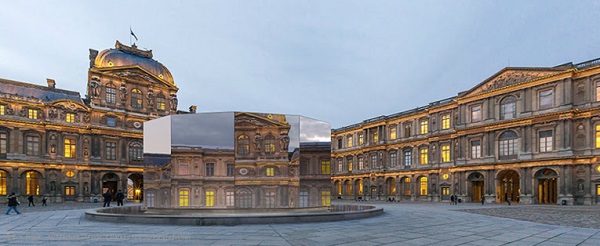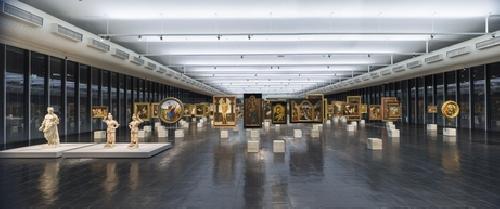
Seydou Keïta, Untitled, 1956-1957 (printed 1997), 120x180cm [left]; Untitled, 1958 (printed 1997), 120x180cm [right]

Seydou Keïta, Untitled, 1956-1957 (printed 1997), 120x180cm [left]; Untitled, 1958 (printed 1997), 120x180cm [right]

Eva Jospin, Panorama
The initial shock of Eva Jospin’s installation in the Louvre’s Cour Carrée (April 12 – August 28, 2016) comes from its display. To discover its high reliefs, the visitor has to pass through several consecutive concentric enclosures to reach the center. First, the classical buildings of the Cour Carrée; next, a circular basin made of stone containing stagnant greenish water; then, set in this basin, a decagonal pavilion reflecting the Louvre facade on its walls – echo and mirror. (The glass Pyramid is not visible because of the obtuse angle towards it; obfuscating the Pyramid – another “grafted” structure – is definitely not fortuitous.) Continue reading

Overview of the MASP
Desecrating versus consecrating. A museum where artworks are not exhibited as distant, inaccessible icons, radiating such an aura that they are not supposed to be enjoyed by visitors, but merely revered in silence, according to guidelines that weere predetermined by those who know, understand, administrate, curate, and who have nothing but contempt for the unlearned visitor, barely worthy of seeing the art from up close. A museum that is not a temple, far from the elitist tradition that imposes its rule in France and elsewhere –the prerogative of narrow-minded conservators and so-called defenders of cultural heritage that are allergic to any kind of modernity, of democratization (it is no surprise that the catalogue mentions how Michel Laclotte, then director of the Louvre, hated the museum; although I don’t know what to think of the fact that Elizabeth II liked it a lot). Continue reading